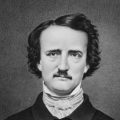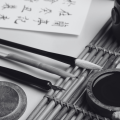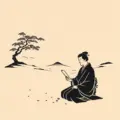The dactylic form of poetry is a poetic meter that has been used since ancient Greece. It is one of the oldest known forms of written verse and was used by some of the earliest poets, including Homer.
While it isn’t commonly used today, having been largely replaced by free verse, and other forms of structured, western Europe poetic forms, there are still beautiful examples of the dactylic form that we can explore.
Dactylic verse is one which can be employed if you’re looking to write epic poetry in the traditional form – particularly if want to create an epic narrative which is ideal for performative or spoken word.
Contents
- 1 What Is Dactylic Poetry?
- 1.1 What is dactylic pattern?
- 1.2 Why is it called a dactyl?
- 1.3 What is the difference between anapestic and dactylic?
- 1.4 What is difference between a dactyl and Trochee?
- 1.5 What is a double Dactyl?
- 1.6 What makes dactylic poetry unique?
- 1.7 What is dactyl in creative writing?
- 1.8 What is a dactylic line?
- 1.9 What is the opposite of dactyl?
- 1.10 Why is it called a dactyl?
- 1.11 What is the pattern of syllables in a dactyl?
- 1.12 What is the meaning of dactylic pentameter?
- 1.13 What is Dactylic hexameter?
- 2 How Do You Write Dactylic Poetry?
- 3 Who Wrote In The Dactylic Form?
- 4 What’s An Example Of Dactylic Poetry?
- 5 Common Dactylic FAQs:
- 5.1 What are dactyls and spondees?
- 5.2 What is a dactyl in music?
- 5.3 What is another word for dactyl?
- 5.4 What is a dactyl in Latin?
- 5.5 How do I use dactylic meter in my writing?
- 5.6 Does a dactyl require both unstressed syllables and an stressed syllable?
- 5.7 What is the difference between anapestic and dactylic?
- 5.8 What’s the opposite of dactylic meter?
- 5.9 What does dactyl mean in Greek?
- 5.10 What’s the opposite of dactylic meter?
- 5.11 What famous poet has a name that’s a double dactyl?
- 5.12 What is the difference between a dactyl and an amphibrach?
What Is Dactylic Poetry?
Dactylic poetry is a poetic meter which is built on the structure of three syllables per line. The first two syllables are long, and the third syllable is short. This pattern creates a beat or rhythm when read aloud and can be used to create a narrative or story-telling effect. It was traditionally used in epic poetry, such as Homer’s The Iliad and The Odyssey.
The two unstressed syllables are often referred to as “dactyls” and the single stressed syllable is referred to as a spondee. This form of poetry has its origins in ancient Greece, when it was used to tell stories and myths through spoken verse.
What is dactylic pattern?
The dactylic rhythm is a pattern of syllables which follows the form: one long (or stressed) syllable and two short (or unstressed) syllables. This rhythmic pattern is also known as a “dactyl” and can be found in various types of poetry, including epic poetry, hymns and lyrics
The dactylic pattern is a great way to create a memorable rhythm when writing poetry, and can be used to convey emotion or narrative. It’s also an effective tool for making your words stand out and capturing the attention of your readers or listeners.
Of course, that is a massive oversimplification, and it isn’t like the form alone is enough to make mediocre poetry incredible. However, the dactylic meter and metrical pattern can provide a solid framework.
Why is it called a dactyl?
The word ‘dactyl’ comes from the Greek word daktylos, which means “finger” or “toe”. This is because when writing poetry in this meter, it was thought that each line resembled a finger pointing outwards.
While not commonly used today, the dactylic form of poetry has been around for thousands of years, and it’s origins are to be found in the poets of ancient Greece.
What is the difference between anapestic and dactylic?
The main difference between anapestic and dactylic meters is the number of syllables per line. Anapestic meter consists of three syllables per line, with the first two being unstressed (or short) and the third syllable being stressed (or long). Dactylic meter is made up of three syllables, but the first two syllables are stressed (or long) and the third is unstressed (or short)
Anapestic meter is usually used to create a humorous or light-hearted effect, while dactylic meter is often used for epic stories or tales of adventure. Both meters can be used in both free verse and structured poetry.
What is difference between a dactyl and Trochee?
The dactyl and Trochee are both three-syllable poetic meters. The difference between them is in the order of the syllables. In a Dactyl, the pattern is long-short-short, while in a Trochee it is short-long-short.
In terms of sound, a dactyl is often seen as a rising, almost questioning rhythm. On the other hand, a Trochee has a more emphatic, falling sound
The Dactyl and Trochee are similar in that they both provide an easily recognisable structure for poetry. They can be used to create interesting rhythms and sounds in free verse poems or structured poems with strict metrical feet.
What is a double Dactyl?
A double dactyl word is a poetic meter where two dactyls are combined in a line of verse. This means that each line consists of six syllables, with the first four being long (or stressed) and the last two being short (or unstressed)
Double Dactyl forms are often used to create a playful, humorous effect and can be found in nursery rhymes and limericks. They often employ alliteration, assonance and internal rhyme to make the poem more memorable.
What makes dactylic poetry unique?
Dactylic poetry is unique in that it allows for a sense of urgency or excitement to be created through its meter. The rhythm is often fast-paced, with the long syllables giving a sense of anticipation or anticipation before the sharp release of the shorter syllable. This makes it perfect for stories and tales which require an energetic or thrilling atmosphere. In addition, its structure can be used to create powerful imagery and emotion in a way that might not be possible with other forms of poetry.
It’s easy to see why so many ancient poets decided to rely on the dactylic meter to propel their narratives forwards, making them easier to remember and engaging to listen to.
What is dactyl in creative writing?
In creative writing, a dactyl can be used to create a sense of urgency and excitement in a piece of prose or poetry. It is particularly effective for stories which require an energetic atmosphere, as the rhythm allows for anticipation before the sharp release of the short syllable
The structure of a dactyl can also help to emphasize certain words, phrases or ideas by allowing for emphasis on certain long syllables. This makes it perfect for building suspense and adding a dynamic element to creative writing
What is a dactylic line?
A dactylic line is a poetic meter consisting of three syllables with the first two being long (or stressed) and the third being short (or unstressed). This type of rhythm is common in ancient Greek poetry and has been used to create an energetic or thrilling atmosphere for thousands of years. Dactylic lines can be used in both free verse and structured poetry, allowing for the easy creation of powerful imagery and emotion. It is a popular poetic meter due to its ability to effectively emphasize certain words or phrases, creating a sense of anticipation before the sharp release of the short syllable
What is the opposite of dactyl?
The opposite of a dactyl is called a Trochee. This poetic meter consists of three syllables with the first being short (or unstressed) and the last two long (or stressed). The Trochee is often used for poems which require a more forceful, emphatic sound than the dactylic meter. It is perfect for creating dramatic atmosphere and is often used in stories to emphasize certain words or phrases.
Why is it called a dactyl?
The term ‘dactyl’ is derived from the Greek word ‘daktylos’ which means finger. This is because the structure of a dactylic meter resembles the pattern of a human finger, with two long syllables followed by one short syllable.
What is the pattern of syllables in a dactyl?
The pattern of syllables in a dactyl is two long (or stressed) syllables followed by one short (or unstressed) syllable. The first syllable, second syllable and final unstressed syllable creates an energetic and urgent rhythm which is perfect for stories and tales that require excitement or anticipation. It can also be used to emphasize certain words or phrases, making it powerful tool in the poet’s arsenal.
What is the meaning of dactylic pentameter?
Dactylic pentameter is a poetic meter consisting of five dactyls per line. This creates an extremely powerful and energetic rhythm, perfect for narratives or stories with an excitement or thrill to them. It is often used in epics such as The Odyssey or even a slightly more modern alternative, such as Beowulf, where the fast-paced structure helps to propel the story forward and makes it easy to remember when performing.
What is Dactylic hexameter?
Dactylic hexameter is a poetic meter consisting of six dactyls per line which is commonly used in epic poetry. This meter creates a powerful and rhythmic structure that can be used to add an extra layer of excitement or anticipation to stories. It has traditionally been used in ancient Greek epics such as The Iliad, and can also sometimes be found in more modern works such as The Lord of the Rings. It is often used to emphasize certain words or phrases, making it perfect for drawing out important elements of a story and creating a sense of urgency.
How Do You Write Dactylic Poetry?
Writing dactylic poetry is not too different from writing any other type of free verse or structured poem. The main difference is that the poet needs to be aware of the three syllable structure in each line, with two long (or stressed) syllables followed by one short (or unstressed) syllable. To make sure this pattern is consistent throughout, it may be helpful to use a rhyming scheme or other poetic devices to ensure the structure is maintained. Additionally, by making sure certain words are emphasized with the long syllables of each line, poets can create powerful imagery and emotion within their work.
Dactylic poetry can be an extremely powerful form of English language poetry, allowing poets to emphasize certain words or phrases, build suspense and create a dynamic atmosphere in their writing. By understanding the structure of this poetic meter, as well as its origins, poets can gain an invaluable tool with which to compose powerful works of art
How do you write a double dactyl poem?
A double dactyl poem is a type of light-hearted, humorous poem written in two quatrains (or four lines). Each line contains six syllables, with the first and second syllable being long (or stressed) and the third and fourth being short (or unstressed). The first line of each quatrain needs
How do you write in dactylic meter?
Writing in dactylic meter involves following a specific pattern of two long (or stressed) syllables followed by one short (or unstressed) syllable. This pattern is then repeated throughout each line, creating an energetic and dynamic rhythm perfect for stories, tales or epics. To ensure this pattern is maintained, it is important to use rhyme, alliteration or other poetic devices which will help to keep the rhythm consistent. Additionally, by emphasizing certain words with the long syllables of each line, poets can further create a powerful and lasting impact within their work.
Who Wrote In The Dactylic Form?
Dactylic poetry was originally used in ancient Greek literature and has since been adopted by many other writers throughout the centuries. It is most commonly associated with epics, such as Homer’s Odyssey, Virgil’s Aeneid and John Milton’s Paradise Lost. More recently, it can be found in works like J.R.R Tolkien’s The Lord of the Rings, as well as contemporary poems and songs. Dactylic poetry is a powerful form of English language poetry, allowing writers to emphasize certain words, build suspense and create a dynamic atmosphere in their writing. By understanding the structure of this poetic meter, as well as its origins, writers can gain an invaluable tool with which to compose powerful works of art
What meter did Homer use?
Homer used a dactylic hexameter meter in his works, such as The Iliad and The Odyssey. This dactylic meter consists of six metrical feet (or “treats”) per line, with each foot consisting of two long (or stressed) syllables followed by one short accented syllable.
What’s An Example Of Dactylic Poetry?
An example of dactylic poetry is the following poem by Virgil:
“Arms and the man I sing, who, forc’d by fate/ And haughty Juno’s unrelenting hate,/ Expell’d and exil’d, left the Trojan shore.”
This poem follows a strict pattern of two long (or stressed) syllables followed by one short (or unstressed) syllable in each line. This pattern is then repeated throughout the poem, creating a rhythmic and energetic atmosphere that is perfect for stories or epics.
What is an example of a dactyl?
A dactyl is a metrical foot consisting of one stressed syllable followed by two unstressed syllables. An example of a dactyl in poetry would be the phrase: “How-ev-er much.” The first syllable, ‘how’, is stressed while the second and third syllables, ‘ev’ and ‘er’, are unstressed.
What is a dactylic pentameter example?
A dactylic pentameter is a type of meter consisting of five dactyls, or metrical feet, per line. An example of a poem in this meter would be the following
“The king’s bright daughter walked through the glade/ Her hair shone like gold in the morning light/ The birds sang their sweet songs in the shade/ As she wandered beneath the stars of night.”
This poem follows a strict pattern of one long (or stressed) syllable followed by two short (or unstressed) syllables. This pattern is then repeated throughout each line, creating an energetic and dynamic rhythm perfect for stories or epics.
Common Dactylic FAQs:
What are dactyls and spondees?
Dactyls are a type of metrical foot consisting of one long (or stressed) syllable followed by two short (or unstressed) syllables. Spondees, on the other hand, consist of two long syllables in each metrical foot
What is a dactyl in music?
In music, a dactyl is an accented rhythmic pattern consisting of two unstressed beats followed by one stressed beat. This type of rhythm can be found in waltz or march music.
What is another word for dactyl?
The terms “anapaest” and “amphibrach” are also used to describe dactylic meter, though they each have slightly different patterns. An anapaest consists of two unstressed syllables followed by one stressed syllable while an amphibrach consists of one unstressed syllable followed by one stressed and one unstressed syllable
What is a dactyl in Latin?
In Latin, a dactyl is a type of metrical foot consisting of one long (or stressed) syllable followed by two short (or unstressed) syllables. This type of meter can be found in classical Latin poetry and has been used to create powerful and dynamic works of literature
How do I use dactylic meter in my writing?
To use dactylic meter in your writing, it helps to understand the structure of this poetic meter and its origins. Once you have a firm grasp on the basics, you can begin experimenting with different ways to incorporate it into your writing. You can also look for examples of dactylic meter in other works to get a better understanding of how it is used. With practice, you will be able to create powerful works of art with the help of this invaluable tool
Does a dactyl require both unstressed syllables and an stressed syllable?
Yes, a dactyl requires both unstressed syllables and a stressed syllable. The pattern is one long (or stressed) syllable followed by two short (or unstressed) syllables. This pattern is then repeated throughout the poem or piece of writing to create a rhythmic, dynamic atmosphere.
What is the difference between anapestic and dactylic?
An anapestic meter consists of two unstressed syllables followed by one stressed syllable, while a dactylic meter consists of one long (or stressed) syllable followed by two short (or unstressed) syllables. Although the structure is slightly different, both meters are used to create powerful and effective works of literature.
What’s the opposite of dactylic meter?
The opposite of dactylic meter would be trochaic meter, which is composed of one stressed syllable followed by one unstressed syllable. Unlike dactylic meter, this type of meter has a strong and steady rhythm that is perfect for creating lullabies and humorous stories.
What does dactyl mean in Greek?
In ancient Greek, the term “dactyl” referred to a finger or toe. It is believed that this term was used to describe the rhythmic pattern of dactylic meter because it resembled the movement of fingers and toes when walking or dancing.
What’s the opposite of dactylic meter?
The opposite of dactylic meter is trochaic meter, which consists of one stressed syllable followed by one unstressed syllable. This type of meter has a strong and steady rhythm that is often used to create lullabies or other lighthearted works. It differs from the dynamic energy created by dactyls.
What famous poet has a name that’s a double dactyl?
Edgar Allen Poe’s name is a double dactyl, as it follows the metrical pattern of two long syllables followed by four short syllables. This type of rhythm is also known as “dibrachic” and can be found in many of Poe’s works, including “The Raven” and “Annabel Lee.”
What is the difference between a dactyl and an amphibrach?
A dactyl consists of one long (or stressed) syllable followed by two short (or unstressed) syllables, while an amphibrach consists of one unstressed syllable followed by one stressed and one unstressed syllable. Both of these meters are used to create powerful works of poetry and literature, but they differ in their rhythmic structure.
- Glossary of Japanese Poetry Terms - 26 February 2025
- What is Waka Poetry? - 23 May 2024
- How to Identify the Kigo in a Haiku: - 22 March 2024





